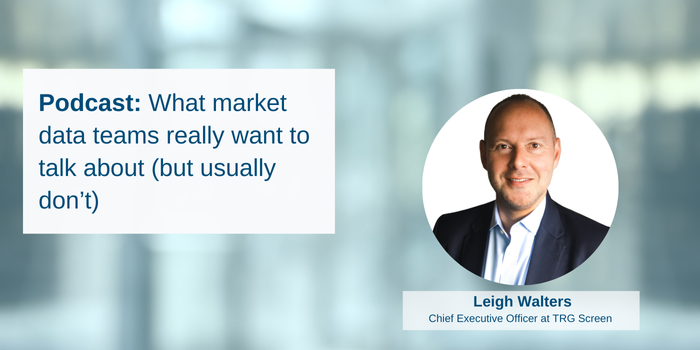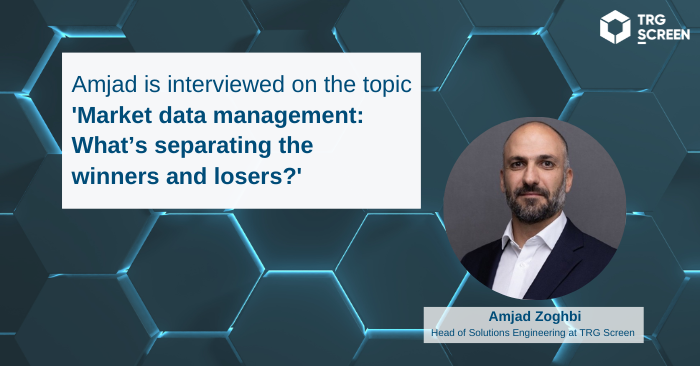One company that is particularly aware of this is Metzler Asset Management. It wanted to stop unexpected spikes in data usage to avoid accumulating thousands of dollars in unnecessary expenses.
So, it set about finding a solution. In this Q&A from a recent TRG Screen webinar, Vitalij Smoljaninov, Head of Data Management at Metzler talks to Clive Posselt from The Realization Group about the challenges the company faced and how Xmon turned things around.
Clive Posselt: As someone who’s actively managing your data consumption, how important is it to protect, provide and practically manage reference data?
Vitalij Smoljaninov: So, with Xmon we have been able to change our role in market data monitoring from a passive to a more proactive role. Getting an overview of our reference data usage is one of the most important parts of our regular cost monitoring.
So being more efficient in this area helps our organization greatly. The solution lets us investigate our data usage, and on top of that, the Xmon Insight team guides us through the whole year according to our usage and gives us a lot of useful feedback along the way.
This is of great value to us since this team knows all the models across the vendors and acts as an extension to our team to understand, report on and optimize our usage.
Let me give you an example. Last year, the Insights team identified an unusual spike in data usage. We were able to trace it back to its source and a specific date. With this insight, we’re now able to avoid unnecessary usage in the future.
Clive Posselt: Yes, I think a real-life case like that sets the scene. Is there any functionality that you and your team find useful?
Vitalij Smoljaninov: Yes, there are two. Let’s start with the first. We use the simulation service that gives us a great forecast for new requirements that might come into the business. For example, last year we used the service to simulate a potential change request and were able to identify the cost of the requirements before the actual implementation. By doing so, we were able to stay within the simulated cost range.
So, that was great. On top of that, we use the cost and usage explorer to assess the data fields and security types we request and make comparisons across different months. Knowing the adjustments and daily spikes helps us in our work.
Clive Posselt: That’s great. I’d like to roll back on something for a second. You talked about the experience of the team and TRG Screen and their role in acting as an extension of yours. How much interaction do you have with the team on a daily or weekly basis?
Vitalij Smoljaninov: We have two main interaction points. We have a quarterly catch-up where we talk about several things that are changing and spontaneous catchups when the team sees something happening to us or the market and gets in touch. They then come back to us and give us extensive and detailed feedback which is useful.
Clive Posselt: How do you see the landscape before and after using Xmon? Has it made a discernible difference to the business at Metzler?
Vitalij Smoljaninov: It’s not just had an impact on the past; it’s also shaping our data usage for the future. Currently, we’re focused on optimizing data usage. But the great capabilities that are coming to Xmon in the next few years will allow us to make a more targeted comparison. What I mean is that someday we’ll be able to compare various vendors in specific fields and identify opportunities for cost savings.
Clive Posselt: Can you tell us about the ROI you’ve got from the system?
Vitalij Smoljaninov: I can’t go into specifics on ROI numbers, but I can say that the first returns come within the first days. That, in turn, allows you to adjust your data usage so you can bring your costs down further.
If you look at the reference data market, you can see that there are different initiatives available for improving your usage. Many of them, however, take months or even years to have an effect. What I like about Xmon is that you can see an improvement on day one.
Optimizing reference data in real-time
With a solution like Xmon from TRG Screen users can track, manage, and optimize reference data. Xmon comes with a very modern data stack that can process data in high volumes and provide analytics in real time. It allows organizations to identify whether certain calls are non-compliant or too costly. And, depending on the usage case, it can be used to potentially block non-compliant calls through a dedicated rules engine.
Lastly, Xmon can be used to generate alerts. If a consumer sends out a request that should be bound by a licensing agreement, the Xmon market data team will know about it. The team will then raise an alert, allowing the client to act immediately.
Recording panel discussion with Vitalij Smoljaninov
Check the recording of the panel discussion below or check our blog where we summarize the webinar.
Want to learn more about Xmon?






